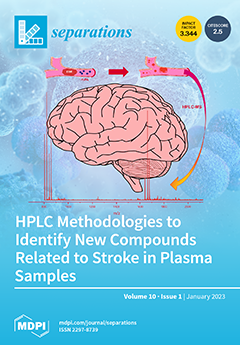In Morocco, the endemic
Artemisia herba-alba is well known by its traditional uses and health benefits. The search for natural, safe, and effective antibacterial and antifungal agents from plants is in high demand due to microbial and fungal resistance to conventional synthetic antibiotics and antifungal drugs. In this study, the
A. herba-alba was collected from the region of Fez-Boulemane during the periods of March, June, and September. Essential oils (EOs) were extracted from the aerial part of the plant by the hydrodistillation method. The chemical constituents were determined using GC-MS as analytical tools. The antimicrobial activities of different oils were tested using the macrodilution method. The results showed the difference in the yields between the three EOs (0.49, 1.74, 1.30% (mL/100 g)), respectively, as well as in their corresponding chemical compositions. The main constituents revealed by GC-MS are higher contents of oxygenated monoterpenes (84.7, 84.4, 81%), such as cis chrysanthenyl acetate (30, 26.7, 27.6%), β-thujone (23.2, 12.9, 15.4%), camphor (9.76, 14.3, 15.8%), chrysanthenone (2.4, 1, 14%), 1,8-cineole (1.5, 11.7, 11.8%), trans β-dihydroterpineol (7.8, 7.2, 6.9%), α-thujone (4.8, 3, 5.4%), and sesquiterpenic davanone (3.9, 1.5, 1.4%), respectively. The three EOs biological activities’ results showed significant antimicrobial effects against four bacteria tested (
E. coli, B. subtilis, S. aureus,
M. luteus), with the MIC values ranging from 0.1 to 0.03% (
v/
v), as well as interesting antifungal effects on both wood rot fungi against four fungi examined (
G. trabeum,
P. placenta,
C. puteana,
C. versicolor) and molds against three microorganisms tested (
A. niger, P. digitatum,
P. expansum), with MIC values ranging from 0.2 to 0.03% (
v/
v) and 0.4 to 0.03% (
v/
v), respectively. The June and September EO samples showed more potent activities than those collected during March. Our research findings showed quantitative variability in both EO contents and chemical compositions, which could be due to the phenological stages, climatic conditions of growth, and harvesting periods. The potent results of the antimicrobial/antifungal activities were provided by the EOs of June and September and might be correlated to the contribution and synergism effect of all oxygenated monoterpenes. These results support the possible application of
A. herba-alba EOs as natural and safe antibacterial agents, and an effective alternative to synthetic drugs, enabling the prevention and treatment of certain pathogenic infections in food and health, and the preservation of wood alteration against fungi.
Full article





